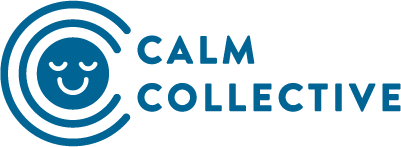How to Lead Meetings That Empower Every Voice
Meetings are where decisions are made, ideas are born, and, often, where your work life is defined. We spend so much time being in them, yet we rarely acknowledge their profound influence on our work life and, more broadly, our organisation’s culture. A productive and inclusive meeting can harness the collective genius of an organisation, while a poorly run one can stifle innovation and create a sense of exclusion.
During our recent talk, “How to Lead Meetings That Empower Every Voice”, our speakers Minette Norman (Award-winning author of “The Psychological Safety Playbook” & “Boldly Inclusive Leadership”, speaker, and leadership consultant) and Sabrina Ooi (CEO, Calm Collective Asia) shared their insights on leading meetings that are productive and inclusive. The discussion emphasised the importance of psychological safety, deliberate meeting design, and actionable strategies for promoting inclusion in meetings.
Here’s a roundup of the lessons we’ve learnt from the conversation:
1. Psychological safety is the foundation for inclusive meetings
Psychological safety is the belief that individuals can speak up, ask questions, and share ideas without fear of being marginalised, excluded, or embarrassed. Without this foundation, people may be hesitant to share their thoughts, leading to missed opportunities for innovation and better performance.
Minette highlighted a few ways leaders can foster psychological safety during meetings, including:
Deliberately inviting other perspectives by asking questions such as, "What am I missing?" or "What are we missing?".
Actively listening to and managing reactions to challenging or opposing viewpoints.
Showing gratitude for diverse perspectives to reinforce that all voices are welcome.
2. Meetings reflect team dynamics and culture
When asked about how meetings are linked to organisational culture, Minette shared that the way meetings are conducted often mirrors the underlying dynamics of a team or organisation.
Factors such as seating arrangements, who gets heard, and who gets ignored can reveal power structures and levels of inclusivity. For example, the seating arrangement in meeting rooms often has those closest to the senior leader perceived as part of the "inner circle”. This proximity often translates to who gets heard and whose opinions are valued, creating a clear distinction between ‘seniors’ and those on the periphery.
By becoming aware of these dynamics, leaders and team members can actively work to create more inclusive meetings that empower everyone to participate.
Sabrina also mentioned how in Asian workplaces, hierarchical culture is often ingrained from childhood, translating into senior leaders having the final say and junior team members feeling disempowered. Minette offered a nuanced perspective on these cultural norms, emphasising that they are not inherently "good" or "bad," but rather simply existing realities. She emphasised that rather than judging these norms, it’s important to focus on practical strategies for fostering inclusivity within their context. For example, leaders in hierarchical cultures can find alternative ways to solicit input, such as anonymous feedback mechanisms, to allow for greater opportunities for participation from a wider range of voices.
3. Deliberate meeting design promotes inclusion
The next step is to deliberately design meetings with the intention to ensure they are useful, engaging and inclusive for all. In particular, Minette suggested focusing on the following actions:
Clearly defining the purpose of the meeting and ensuring that all participants understand why they are there.
Inviting a diverse group of people who can offer different perspectives and challenge groupthink.
Providing an agenda in advance to allow participants time to process information and formulate their ideas.
Establishing clear agreements on how the meeting will be run, including turn-taking rules, guidelines for managing airtime, and strategies for handling interruptions.
4. Leveraging digital tools enhances participation
Digital tools can level the playing field and create a safer environment for individuals to share their ideas. For example, using virtual whiteboards or online polling tools allows everyone to contribute their thoughts anonymously before opening the floor for discussion. This can be particularly helpful for those who may be hesitant to speak up in a group setting.
Incorporating periods of silence for individual reflection can also encourage more thoughtful participation. Sabrina shared how having structured silence would benefit her. Being quiet by nature and introverted, she usually takes a bit more time to think and process what's going on before she can offer her contribution.
Ultimately, creating inclusive meetings and team cultures requires a commitment from every individual to listen better, be curious about other perspectives, and create space for all voices to be heard. By taking small, actionable steps, such as actively inviting diverse viewpoints and utilising digital tools, individuals can foster a more psychologically safe environment where everyone feels valued and empowered to contribute their best work.
Calm Collective Asia helps organisations normalise mental health at work through our consultancy services, programmes, and training. Learn more about our corporate offerings for workplace well-being.
Learn more about Minette and her work on psychological safety and inclusive leadership at minettenorman.com.
